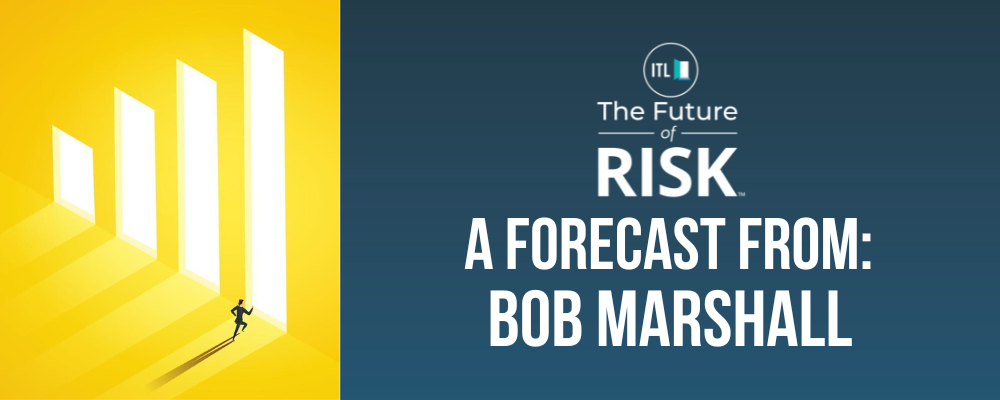KEY TAKEAWAYS:
--The unprecedented heating of the Atlantic Ocean is leading to storms intensifying more quickly, lasting longer and bringing more water. Nowhere in Florida can now be considered immune from the impact of hurricanes. States farther north are more in danger of both wind damage and flooding than previously. And more people keep moving into the danger zone.
--An expanding number of tools are available to set premiums at a far more granular level, exploiting both macro weather data and sources directly from a property, such as aerial photography, that can indicate, for example, whether a roof is vulnerable to storm winds.
----------
In late August, Hurricane Idalia made landfall in northern Florida, wreaking havoc in counties throughout the “Big Bend” region before moving on to southeast Georgia and the Carolinas as a tropical storm.
Idalia’s path and trail of destruction provided further evidence to back the findings of the LexisNexis U.S. Hurricane Season Trends Report, which shows that major storms are moving northward, maintaining their strength for longer and expanding their impact into areas previously considered less at risk, including non-coastal states.
The cause is clear. The unprecedented heating of the Atlantic Ocean caused by climate change is leading to storms intensifying more quickly, lasting longer and bringing more water. And the consequences are far-reaching. Nowhere in Florida can now be considered immune from the impact of hurricanes, with coastal areas likely to see greater damage and inland regions more vulnerable than ever before. As Idalia showed, states farther north are more in danger of both wind damage and flooding than previously.
As more and more homes across the southeastern U.S. are exposed to hurricane damage, insurers already tormented by storm-related issues must now recognize and respond to the threat that is steadily advancing into new regions.
See also: Property Underwriting for Extreme Weather
2022 season shows northward shift
The research, published by LexisNexis in September and focusing primarily on wind losses, underlines what insurers have experienced in the field. 2019 was the only year since 2017 in which total single-home wind losses have not exceeded $3 billion; the number of named storms has also risen, and their impact has intensified.
Analysis of the 2022 season by LexisNexis, in which four named storms hit the southeastern U.S., has illustrated the growing issues for homeowners and insurance carriers. Three storms – Alex, Colin and Nicole – resulted in relatively little damage, but two of those highlighted the growing range of storms. Colin disrupted Fourth of July celebrations when it hit North Carolina, while Nicole brought heavy rainfall and damaging winds to Georgia and South Carolina.
The other of the four storms, Ian, made landfall as a Category 4 Hurricane north of Fort Myers and traveled in a northeasterly direction across largely empty areas of central Florida before returning to the Atlantic Ocean. Once there, it temporarily weakened before turning northward and making landfall a second time, at hurricane strength once more, in northern Georgia. It then passed into North Carolina.
The National Oceanic and Atmospheric Administration (NOAA) estimated Ian’s total damage at $112 billion, making it the costliest in Florida’s history. Single-home wind losses are estimated at $6 billion.
It could have been much worse. After leaving the populated Gulf Coast area, Ian’s path took it across an area of low population density, with an estimated 600,000 people within 10 miles of its epicenter. In the two days prior to landfall, the NOAA plotted projected routes for the storm that would have taken it farther north, placing the heavily populated metropolitan areas of Tampa and Orlando, and an estimated 2.5 million people, in its path. Damages could have been four times as high had Ian followed one of these trajectories.
Growing population in the storm path
In addition to stronger and longer storms, there is another key factor driving up the costs of named storms: population growth. Despite the increasing dangers of an intensifying storm season, and the subsequent spikes in policy costs, more and more people are moving into the danger zone.
Florida experienced a surge in population growth between 2010 and 2021. Much of coastal Florida saw increases in excess of 10%, with some parts at double that rate. Areas east of Tampa and around Orlando grew even faster. Some of that metropolitan-area growth has dropped since 2021, as COVID considerations took hold, but coastal growth has continued.
The northward shift of storm season, and its intensification, has been relatively quick and largely unexpected. Millions more Americans now face risks to their lives and homes that they may not have anticipated, as well as soaring homeowners insurance premiums.
See also: Glimmers of Good News on Climate (Finally)
Data is key to meeting the challenge
As a result, carriers have more households threatened by a growing number of increasingly severe storms, all the way from the Florida Keys to North Carolina and possibly beyond.
With the risk spreading and the safe pool of properties within which to share it shrinking, carriers face a daunting challenge; even states that may previously have been prepared for hurricanes on the coast now face threats farther inland. Some insurers have chosen to abandon Florida, others have been forced out of business, while many will be looking nervously at storm impacts farther north.
Case in point: In late September, a well-known insurer dropped more than 10,000 homeowners policies in North Carolina. Major carriers have also been taking other approaches, notifying regulators that, in some cases, they will no longer insure properties against hurricane damage (and other natural disaster risks) in certain areas, such as along coastlines.
To survive and thrive in these circumstances, carriers need to adjust their business to better understand and mitigate their exposure. This not only applies to states facing hurricane risk, but to others where fire and hail are increasing perils.
An expanding number of tools are available to set premiums at a far more granular level, exploiting both macro weather data and sources directly from a property, such as aerial photography, that can indicate, for example, whether a roof is vulnerable to storm winds.
Such services can be deployed using automated processes backed by artificial intelligence (AI) tools that needn’t add to the administrative burden and can allow carriers to understand the real level of risk they face.
The time to act is now. The data from 2022 and weather events in 2023 suggest the climate crisis is only growing and carriers need to use every tool available to counter the threat.






















